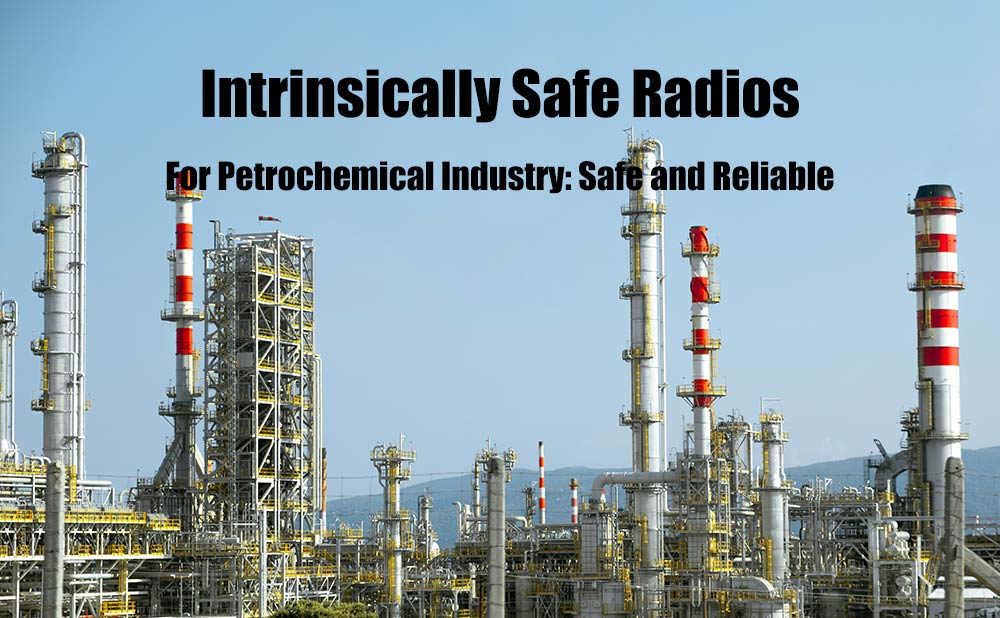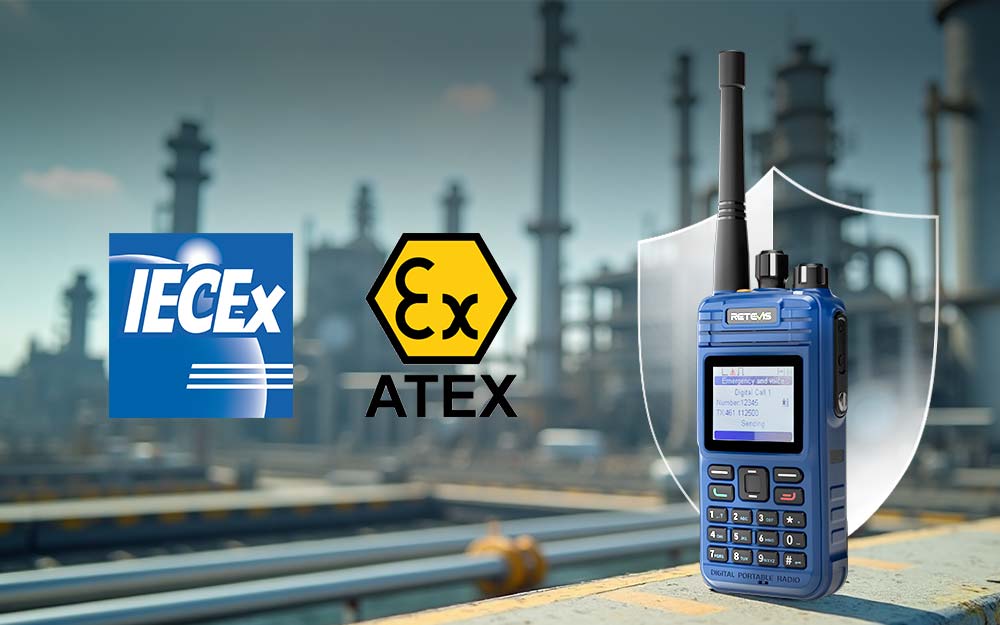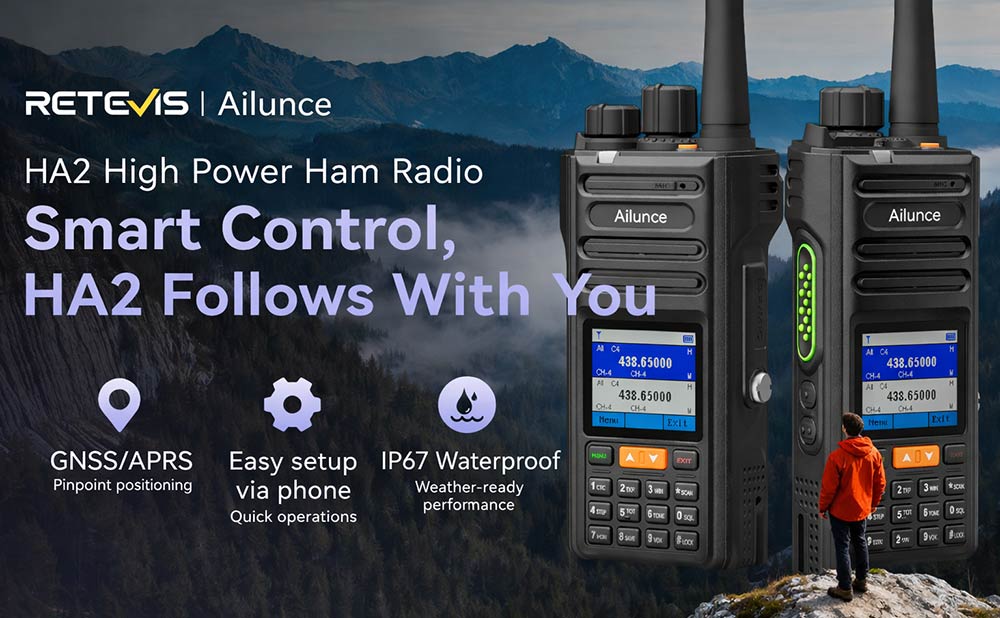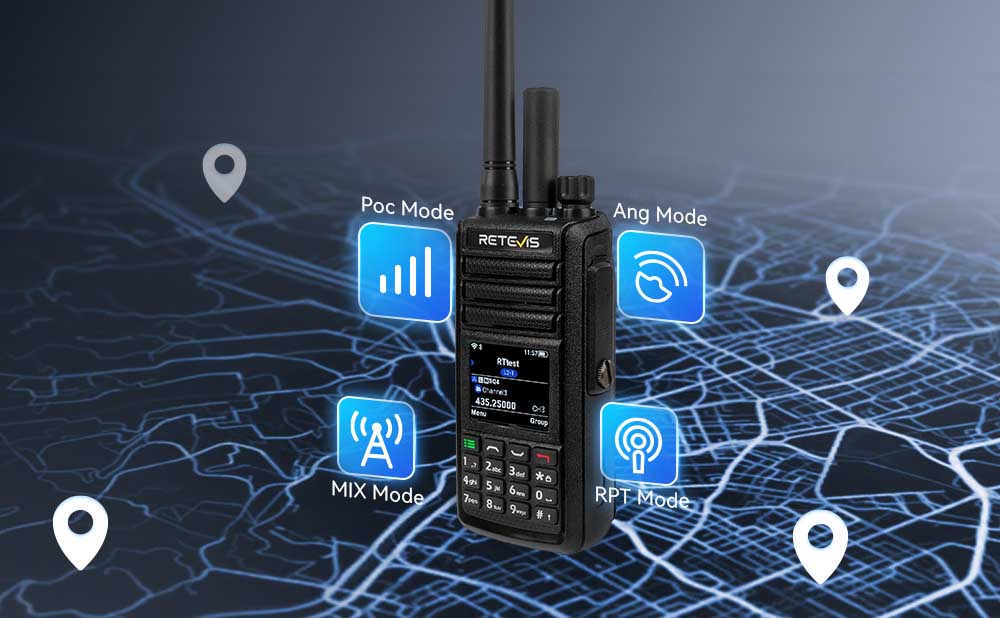Table of Contents
Intrinsically Safe Radios for the Petrochemical Industry: Safe and Reliable
- Posted by:Lucky
- 0 Comments

Petrochemical Industry Needs Intrinsically Safe Radios
The hazardous conditions found in the petrochemical industry, which includes refinery plants and facilities for the production of fuel and oil, are well-known. Every day there are risks of flammable liquids, explosive gases, and static electricity.
Communication clarity in hazardous regions is not only beneficial but also required. Standard radios have the potential to produce high surface temperatures or sparks, they can be extremely dangerous. Therefore, petrochemical plants now require intrinsically safe radios.
This article explains the importance of intrinsically safe 2 way radios to the petrochemical industry and how Retevis E2 digital intrinsically safe radios provide reliable, safe communication in hazardous environments.
Why Intrinsically Safe Radios Are Essential in Petrochemical Plants?
The purpose of intrinsically safe radios is to stop explosive atmospheres from igniting. Because of their limited energy output, they make sure that no part can produce enough heat or sparks to set off flammable dust or gases.
In petrochemical plants, common hazards include:
• Methane
• Vaporized gasoline
• Hydrogen sulfide (H₂S)
Devastating explosions can occur when non-intrinsically safe equipment is used in such circumstances. Global certifications such as ATEX and IECEx, which attest to their safety in explosive environments, must also be met by radios in these regions.
Click here to find and choose reliable hazard area radios
Intrinsically Safe Radios Application Scenarios in Petrochemical Plants
There are particular difficulties in various petrochemical facility sectors. Intrinsically safe radios are used in the following important areas:
Zones of Production
• These areas have high gas concentrations and volatile chemical reactions.
• Radios need to be impervious to dust and sparks.
• Without becoming a source of ignition, radios such as the Retevis E2 guarantee continuous communication.
Teams for Maintenance
• Electrical systems and mechanical tools are managed by maintenance teams.
• Risk of static discharge or accidental impact is high.
• While maintaining line-of-sight independence, intrinsically safe radios reduce the risk of fire.
Tank Farms
• This is where large amounts of fuel are kept.
• All communication equipment needs to be waterproof and resistant to corrosion.
• In the event of a leak or fire threat, emergency teams can stay in communication thanks to intrinsically safe radios.
Maintain safety in every zone. Discover Retevis E2 digital intrinsically safe radio.
Benefits and Limitations of Using Intrinsically Safe Radios in Petrochemical Industry
Key Benefits
• International Safety Compliance: ATEX and IECEx certified
• Resistant to Interference: Maintains signal integrity even in metal-rich environments
• Safe Battery Management: Prevents overheating and thermal runaway
Limitations
• Higher Cost: Cost of intrinsically safe devices is high
• Limited Repairs: Users cannot open or modify the device
• Periodic Inspection Required: Safety integrity must be confirmed regularly
Despite these limitations, intrinsically safe radios are essential in any fuel refinery plant or petrochemical zone.
How Retevis E2 Digital Radios Handle Safety Problems in Petrochemical Plants?
The Retevis E2 digital intrinsically safe radio is purpose-built for explosive environments like those found in petrochemical industry, fuel storage facilities, and offshore platforms.
Equipment corrosion and seal degradation
Chemical environments release corrosive gases like hydrogen sulfide (H₂S) and chlorine that damage standard plastics and seals, exposing internal circuits and increasing the risk of short circuits or sparks.
Retevis E2 Digital Intrinsically Safe Radio Provide:
• IP68 rating: Fully dustproof and waterproof (submersible to 1 meter)
• Casing Material: Made from V0-rated ABS+PC, resistant to corrosive gases like H₂S and chlorine
Excessive heat could ignite explosive gases
Non-compliant devices may overheat in operation, posing a combustion risk in flammable atmospheres.
Retevis E2 Digital Intrinsically Safe Radio Provide:
• T4 thermal rating: Ensures external temperature remains safe
• Heat Management: Built-in thermal limiters prevent combustion
Signal interference in metal-rich environments
Dense structures like tanks, pipelines, and towers interfere with radio waves, shortening communication range.
Retevis E2 Digital Intrinsically Safe Radio Provide:
• High Sensitivity Receiver: 0.25 µV sensitivity for analog and digital signals
• UHF Band (400-480MHz): Excellent penetration in facilities with metal structures
Stay protected and connected. View our Retevis E2 digital intrinsically safe radio.
Key Considerations When Choosing Radios for Refinery Plant?
When selecting the right intrinsically safe radio, oil refinery plant should consider:
• Certification: ATEX/IECEx compliance is non-negotiable
• Modulation Mode: Supports both analog and digital (dual-mode capability)
• Battery Life: Minimum 10–12 hours with thermal control
• Noise Cancellation: Industrial noise is constant
• Custom Channel Zones: Team-specific zones improve emergency response
Equip your refinery plant with confidence. Learn more about Retevis explosion-proof radios.
Conclusion
Standard two-way radios are not an option in the petrochemical industry. Explosive gases, corrosive environments, and EMI interference demand more.
Intrinsically safe radios like the Retevis E2 provide reliable, certified, and durable communication tools, tailored for the unique challenges of petrochemical plants, refineries, and fuel facilities.
Choose safety. Choose clarity. Choose Retevis!







Comments
No data Yet